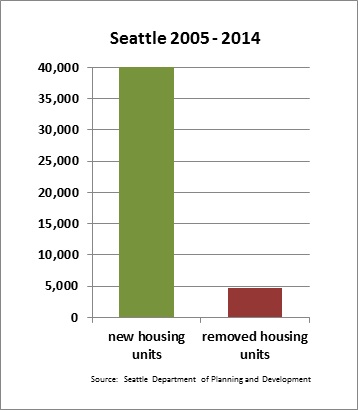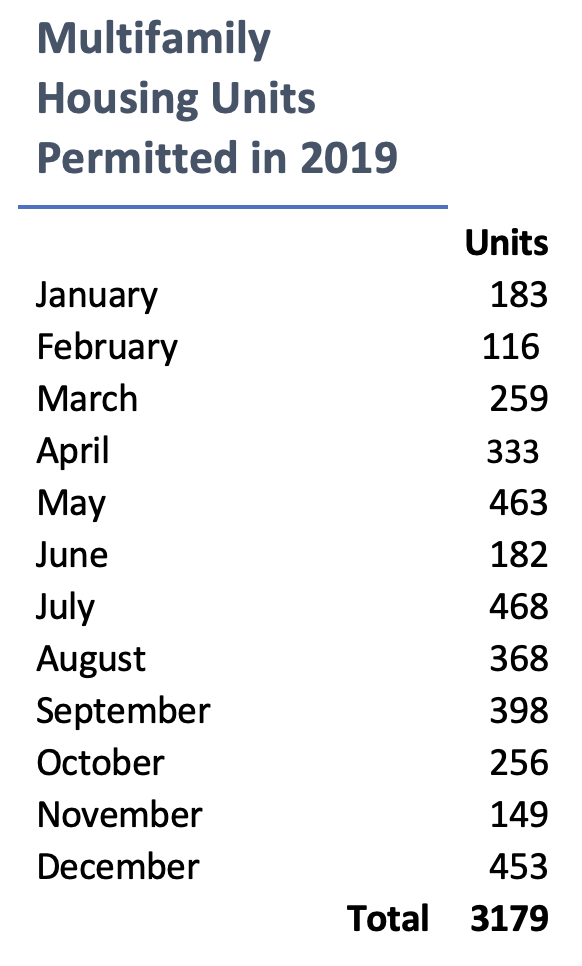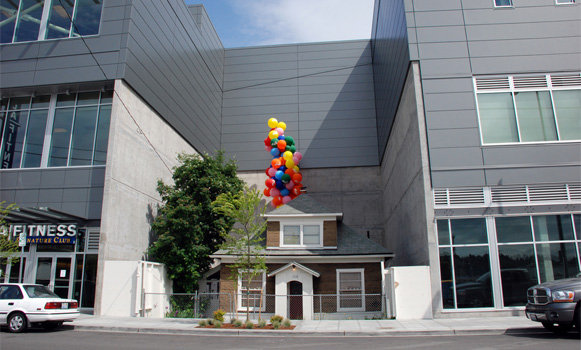Why Vote “No” on the Housing Levy?
If you’re reading this, there is a pretty good chance you have read the voter’s guide and asked yourself, “Who would oppose the housing levy?” It has taken a long chain of abuses and misgovernment for me to turn against Seattle’s housing levy, a measure I supported the last time it was on the ballot in 2016 and every other time I was able to vote for it. Since that time, the state, county, and Seattle government has taxed, cajoled, squeezed, and borrowed billions of dollars to address the “housing crisis.” Ask yourself this, have the problems you are most concerned about when it comes to housing gotten worse or better since 2016?
Let’s go back in time.
Where did all those suffering people, tents, and garbage come from?
Seattle has always had improvised housing, from the Great Depression until today. Back in 2016, I argued that we should work with people in encampments instead of sweeping them away. There are various reasons why people choose to live outside; and yes, in many cases, this is a choice; and this choice doesn’t deny people their entitlement to compassionate when and how they want and need it. Of course, people who are poor have fewer guard rails to break through and can find them selves just one mental or physical health crisis away from losing a job, income, and then housing. It is exceedingly rare for someone of means to find themselves homeless; they have enough money, insurance coverage, family, and institutional support to find themselves living under a bridge and shouting at cars.
But by 2016, we began to see the effects of lax law enforcement and more powerful and destructive drugs begin to take their toll. People who lived on the margins, in and out of housing but averse to congregate settings, sometimes found housing. Or they somehow used improvised housing to avoid other options. But when fentanyl hit the streets, the problem of people living outside became a destructive spiral; people using fentanyl are possessed by the cheap and powerful drug until it destroys them, usually in public at a park or in the right of way. For most people, this isn’t a choice anymore; people need help.
I am not suggesting we lock people up or sweep them. In fact, we must combine harm reduction strategies and interdiction of drugs to reduce their supply. People who are selling and trafficking the drug belong in prison. We’ll always have people in the margins of public space who end up living there, but this drug calls for a rescue operation. . But instead of mounting one, the City of Seattle hasn’t even made having or using the drug in public illegal. To the people who express outrage over sweeps, I agree, I’m against them. But what is your solution. This problem isn’t going to be solved by handing out apartment keys. This is not an economic problem, but a health crisis of greater depth and dimension that Covid ever was. Seattle isn’t doing anything but pushing the panic bottom and asking for more money. The answer to that should be, “No more money until you explain why the money you’ve spent already hasn’t worked.”
Choking off supply, watching prices rise, then declaring a crisis
Beginning in 2015, the City of Seattle,
- Prohibited small houses on small-lots in Seattle’s single-family zones,
- Abolished microhousing;
- Effectively downzoned the low-rise zones which provided what people called “gentle density,” apartments, townhomes, and a mix of retail;
- Imposed what amounts to a tax on every new square foot of development in the city; and
- Imposed a myriad of impositions of rules, regulations, fees, fines, and taxes increasing costs and risks for housing providers.
Taken together, these measures have incrementally made Seattle’s already complex zoning code even more complex, creating more limits to the creation of new housing. This has created limits to new supply, and when demand increases, that means higher prices. And this is the source of Seattle’s self imposed “housing crisis.”
Bloated Low Income Housing Tax Credit (LIHTC) projects
The single biggest driver of housing inflation in the United States is LIHTC. Local governments like Seattle, indulge the worst tendencies of their citizens, especially enfranchised single-family homeowners and justice campaigners, imposing all sorts of limits and constraints on housing. When prices go up, the answer is always “We need more affordable housing,” rather than “We need more housing so that it is affordable.” There is a big difference.
For the people who run Seattle, and impose the rules that limit new housing in the first place, the big bailout comes with “affordable housing,” which, as I appointed out in the voter’s guide, isn’t affordable at all. Projects are ringing in with development costs in excess of $500,000 per unit in some cases. This is madness. But The City Council can blame developers and greedy landlords while they impose what amounts to embargo on new housing production because they can count on more, and more, and more, and more money.
We don’t need more money, we need more housing
Inflation is caused by too much money. In Seattle’s case, proposals like the levy subsidize really bad land use and housing policy, policy that manufactures scarcity with zoning and taxes. When prices go up, the City pours more money on the problem. Yes, some housing is built, but not even close to enough housing. When that solution, more money, fails, does government ask itself what it did wrong? Does the Seattle City Council reduce the land use code and taxes that price up housing production? Of course not. They ask for more money.
If you vote yes, you’re just pouring more cash on the problem, and the result won’t be an appreciable reduction in suffering on the streets or lower housing prices. Instead, the levy will fuel more extravagant “affordable” housing projects that dribble out units dozens at a time at great expense over 5 years or longer. It’s inefficient. And here’s the thing, efficiency is compassionate!
I might pay a price for it, but it must be pointed out that we’re spending more and more, and getting less and less value. I’m not against taxes, but I am against bad taxes, and this is an example of one. The levy will probably pass again, overwhelmingly. And you won’t even feel it. But you will continue to see people killing themselves on the streets and hearing complaints about how,”It’s too damn expensive here!” If you vote “Yes” the only person to blame will be looking at you in the mirror.
Something New: Everything Urban
How about a podcast? Well, Tim Dubois has invited me to collaborate on his efforts to get the conversation going on alternative views about housing, land use, and urban planning. This isn’t the usual YIMBY stuff. We’re hoping to mix banter on economics and public policy with some ideas about how cities can make way for growth and still be affordable. Take a listen to our first episode where we talk about abolition of zoning. People understandably confuse zoning with the building code; getting rid of zoning will only help affordability and won’t make housing less safe.
Up In Smoke: Seattle Favors Money Supply Over Housing Supply
Somehow, growing up in the 1970s and 80s, I missed seeing any Cheech and Chong movies. But not that long ago, I watched some clips of the duo in action. I think they are adequate mascots if not analogs for Seattle’s political class. After wrenching more than $750 million for housing, local tubthumpers want more with a scheme they’re calling “social housing.” The proposal is delusional at best and fraudulent at worst; simply put, Seattle hasn’t shown it knows what to do with money for housing and it already has public development authorities that build housing. From my Forbes post:
There have been numerous efforts and schemes to shake more cash out of the economy for housing, most of them have been implemented, yet the media, activists, and local government in Seattle have yet to ask, “Where did all that money go?” or “Wait, did all that money we poured on the problem end homelessness or lower prices?” Perhaps now Seattle voters will demand answers to these questions and deny a place on the ballot for the measure this fall until answers are given.
Where Did All The Money Go? ‘Social Housing’ Proposal In Seattle Is Redundant
Seattle has been smoking lots of pot lately, and maybe that accounts for the madcap way the community and politicians have been rolling up the hundred dollar bills for their blunts, fantasizing about and maybe even believing that housing is somehow happening because cash has been squeezed from every conceivable source for it. Maybe elected leaders and the Seattle Times reporters who “report” about housing think the Keebler Elves are hard at work building housing somewhere that will solve the crisis.
Anyways, it’s been a spell since I have posted here and I thought this topic appropriate. Don’t look for any investigative journalism from the whiz kids at the Seattle Times either. My guess is that we might have hit peak Seattle on housing funding and people will finally give a thumbs down to this latest adventure of our local woke Robin Hoods. Maybe all that legalized pot people in town have been eating and smoking is wearing off. We’ll see.
Gonzalez “Plan” is More of a Fantasy
I’ve already pointed out that candidate for Mayor Lorena Gonzalez’ plan isn’t a plan at all but mostly a word salad intended to trigger sentiments in voters. The only plan behind what Gonzalez has offered on housing and homelessness is that voters will hear the right words enough times that they’ll vote for her. But I thought I’d point out something that Gonzalez does that everyone — media, politicians, and armchair “urbanists” — is guilty of. I’ll call it housing hyperbole.
In her “plan,” Gonzalez says,
As Seattle Mayor, I know we must lead in our region and work closely with local, regional, state and federal partners to develop the housing we need: about 37,000 more affordable homes for families and individuals living on extremely low incomes (according to the latest 2020 McKinsey & Co. report).
From Lorena for Seattle Website
Let’s get something clear. From 2005 to 2014, a period of 10 years, the City of Seattle permitted 40,000 housing units.

Well, sure. But that was years ago. Surely the City has permitted many more units each year, probably lots more than just 4,000 units. Right?

The year before the pandemic broke out, the City of Seattle permitted more than 3,000 multifamily units. With single-family and townhouses, the City was still permitting about the same in 2019 as it was years ago.
I wish we had a curious and hard working media that could ask the question of Gonzalez, “Well, how long would it take to build 37,000 units of housing?” That’s not just a logical question it would be, well, the most basic question you’d ask. If there are thousands of people suffering and your plan is to build lots of housing fast, how long would that take.
But don’t expect the crack squad of “journalists” and bloggers to put their sandwiches down and pose such a simple question. The answer is, based on the regular rhythm of permitting at the City, it would take about a decade. If the pace was doubled, it would take 5 years. Now keep in mind that these are permitting numbers, not completed developments with certificates of occupancy. It takes as long as five years to build a project in Seattle. Even if Gonzalez picked up a hammer and worked on the crane from day one, the first of her 37,000 units would be ready until 2027.
Issued permits are worth looking at because it gives some indication of what is right around the corner, but it’s impossible to say, based on permits how many of those 3,000 units permitted in 2019 were available for move in in 2020 or 2021. Many might still be in construction.
Gonzalez’ ignorance is widespread. Don’t even get me started on McKinsey and Company. Part of the reason we’re in such a mess is that Gonzalez doesn’t have a clue what it takes to build a housing project nor does she have any interest in figuring that out. And the media? Same problem. No interest in the process of financing, land acquisition, construction, and permitting. It takes a long time, is expensive, and isn’t helped by taxes, fees, fines, and process extortion like design review and inclusionary zoning.
Even if politicians and the press did know the details, I doubt they’d bother to ask the question, “How do you build an additional 37,000 units quickly.” Forget about even asking where did such a nice round number come from. Real people wake up every day in Seattle and across the country with real problems, often the biggest problem they face is how and whether they have rent for next month. Meanwhile, Gonzalez and her ilk are taking a mental trip through a housing Fantasyland.
Of Cottages and Individualism
This was written as a Facebook note in September of 2009. I’m reposting it because it is worth noting that I have always been deeply opposed to the sentimentality of the single-family neighborhood. This is why, as I’ve posted elsewhere, I find it discouraging to see the critique of single-family highjacked by the social justice crowd. The dichotomy I draw between the fictional characters Howard Roark and George Bailey is still an interesting one, but one that I might reexamine. In the years since I have written this, I have, perhaps, drifted more in the direction of Roark (see my post on why and how I am a conservative), although I am not a libertarian. That’s probably enough commentary. Enjoy!
Where are we headed?
I’m not sure.
The Seattle City Council is planning on allowing single family folks to build cottages in their backyards.
I am sure that we will have a great debate about the cottages, led, I’m sure by those who fear for their privacy and way of life. It looks like to me another battle between those who see the big picture and those who want to focus on their own backyard. I am biased. But I have done some research.
There have been 17 of these things done in Seattle already. These are permitted, legal and up and up cottages. I drove around last fall and checked them out. Where I was able to, I took a picture. Take a look at a few:





I found the DADUs (Detached Accessory Dwelling Units) in all kinds of neighborhoods. Rich. Poor. In between.
From whence does the opposition to the humble DADU come from? Mainly from the likes of Knute Berger who wrote of the great Lesser Seattle martyr Edith Macefied :
People like Edith Macefield who want to live quiet lives and be left alone are now the equivalent of squatters — they occupy space that has a destiny, a “highest and best use” that doesn’t include people who want to live their lives in peace.
Here is Edith’s cottage:

And here is Thomas Jefferson’s:

Each is a paean to the single family home, the individual with their God given individual rights in the face of the collective. Why do we live in America, after all, if not to have our own version of Monticello. Never mind that Jefferson was a slave owner and authored the first legislation to nullify federal law in favor of local, state rights. As many Americans achieve woke status, perhaps they’ll turn an eye toward Jefferson’s views on secession and nullification.
Think of Gary Cooper as the hero of
The Fountainhead,
Howard Roark. Roark was Ayn Rand’s view of the heroic individual standing against the state and the collective. Thomas Jefferson couldn’t have said it any better than Roark.
The Fountainhead is a story about an architect who stood up to the monster of society. A rugged individual. So rugged that when his vision was changed he blew up the building he designed. On trial for the demolition he stands alone before the jury. Here are the words of the super individual on history:
“Every new thought was opposed, every new invention was denounced. But men of un-borrowed vision went ahead. They fought. They suffered and they paid. But they won…His truth was his only motive.”
“He went ahead whether others agreed with him or not. With his integrity as his only banner. He served nothing and no one. He lived for himself. And only by living for himself was able to achieve the things that are the glory of mankind.”
“The mind is an attribute of the individual, there is no such thing as a collective brain.”
Roark, Rand, and Jefferson find the ultimate expression of freedom in the experience and accomplishment of the individual. These are, usually, the foes of change, growth and more people moving in.
But let’s hear another voice in black and white. Jimmy Stewart as George Bailey standing up for the good of the collective brain. Here he is in this clip from It’s a Wonderful Life.
“You, you said that they — What’d you say just a minute ago? They had to wait and save their money before they even thought of a decent home. Wait? Wait for what?! Until their children grow up and leave them? Until they’re so old and broken-down that — You know how long it takes a workin’ man to save five thousand dollars? Just remember this, Mr. Potter, that this rabble you’re talking about, they do most of the working and paying and living and dying in this community. Well, is it too much to have them work and pay and live and die in a couple of decent rooms and a bath? Anyway, my father didn’t think so. People were human beings to him, but to you, a warped, frustrated old man, they’re cattle. Well, in my book he died a much richer man than you’ll ever be.”
Rabble. Collective brain. Society. Community. Density.
George Bailey is the voice of another American tendency, the one that looks out for the other person, the one that makes a sacrifice and the one that sees opportunity in the common good. This is the tendency we need to tap into as we look at growth and new people coming into our city. Sappy yes. But it’s our kind of sappy.
The two most hallowed American documents, the Declaration of Independence and our Constitution, have ensured that we will forever be pulled between “certain inalienable rights” and “we the people,” between what’s good for me and what is good for all of us. Living our lives in peace, as Berger suggests, is one advantage. What about choice and variety. The City has rightly focused on the idea of choice in the cottage discussion. If people want to be left alone they shouldn’t live in the City.
We’ll hear complaints and worries and fears. Data will be stretched to its breaking point to prove that privacy will be lost and property value will be lost, and most of all parking will be lost. Parking that great entitlement of all Americans. If Thomas Paine was alive and writing today he might argue that your parking space was certainly one of your natural rights. Parking is the third rail of Seattle politics because taking it away means reclaiming public space for strangers.
But the fact is that in all of the 3 years that backyard cottages were allowed in the southeast only 17 projects were permitted. 17. Seventeen.
The City is now proposing–sit down–50. Fifty. Fifty! Fifty cottages would be allowed city wide. Opposition to this program exposes ugly side of the American tendency, the one that stands against the good of the whole in favor of the individual. Keep them out! I got here first! Not things most of us would say to another person in the face.
But nevertheless the American dream of a big house with pond and a garage is something we’ve subsidized and supported with our tax laws, zoning and political rhetoric for five decades. The environment has suffered as a result. And, perhaps, so have people. Each of us in our Monticello with our car parked out front have forgotten about the good of the “collective brain.” Many good people trapped in the thinking of the last five decades will be outraged about the infringement on their American dream coming in the form of the cottages. Their outrage is understandable but still worthy of disapprobation.
The cottage concept is a good one. Nobody’s going to get hurt. Maybe some parking spots will get filled with strange cars. Maybe there will be some noise. In the end we will welcome some new people into Seattle, some single family homeowners might make some extra money from collecting rent and we’ll all find the world didn’t end because of the cottages. On the contrary our lives will be improved, our sense of community enhanced and we’ll have the advantages of more people to watch our streets, spend money in our local businesses and stand up for our neighborhoods.
Am I discursive? Yes. Is this a rant. True. I think so. Nevertheless,
WE can do better than get all hot and bothered about 50 freakin’ DADUs. Resistance to the DADUs is born of fear and fear is not American at all. Or maybe it is.





